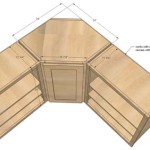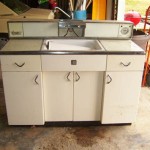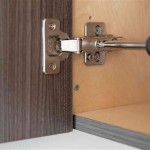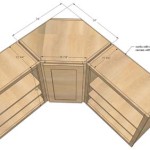Kitchen Shelf Organization Ideas
Efficient kitchen shelf organization is crucial for maximizing space and improving workflow. A well-organized kitchen contributes to a more enjoyable cooking experience and reduces meal preparation time. Various strategies and tools can transform cluttered shelves into functional and aesthetically pleasing storage spaces.
One effective method is incorporating shelf risers. These create tiered levels, effectively doubling the usable shelf space. Shorter items can be stored underneath the riser, while taller items are placed on top, ensuring all items are visible and accessible. Risers are available in various materials, including metal, bamboo, and acrylic, allowing for customization based on individual kitchen aesthetics and needs.
Clear storage containers are another valuable organizational tool. These allow for easy identification of contents, eliminating the need to rummage through multiple containers. Opting for uniformly sized containers creates a neat and cohesive look. Labeling these containers further enhances organization, especially for storing dry goods like flour, sugar, and spices.
Lazy Susans are ideal for corner shelves, which are often challenging to access efficiently. These rotating trays provide easy access to all items stored within, eliminating the need to reach deep into the corner. Lazy Susans are particularly useful for storing oils, vinegars, and other frequently used condiments.
Drawer dividers are not limited to drawers; they can also be employed within shelves to separate and organize items. This is particularly helpful for storing items that are prone to rolling around, such as cans or spice jars. Dividers prevent items from becoming jumbled and make it easy to find what is needed quickly.
Utilizing the vertical space within cabinets is key to maximizing storage capacity. Hanging organizers can be attached to the underside of shelves to store items such as mugs, utensils, or rolls of aluminum foil and plastic wrap. This frees up valuable shelf space for other items.
Decanting pantry staples into clear containers offers several advantages. It creates a uniform look, maximizes space by eliminating bulky packaging, and allows for easy monitoring of remaining quantities. Furthermore, it protects dry goods from pests and moisture.
Adjustable shelves offer flexibility in accommodating items of varying heights. They allow for customization of shelf spacing, ensuring that no vertical space is wasted. This is particularly useful when storing larger items such as pots and pans.
Door-mounted organizers are another effective way to utilize otherwise wasted space. These organizers can be used to store spices, cleaning supplies, or other small items. Over-the-door organizers are particularly useful in pantries or cabinets with limited shelf space.
Grouping similar items together is a fundamental organizational principle. Storing all baking supplies in one area, all canned goods in another, and so on makes it easier to locate items quickly. This principle also helps to maintain a sense of order and prevents shelves from becoming cluttered.
Regularly purging expired or unused items is essential for maintaining an organized pantry. Taking the time to discard unwanted items prevents clutter from accumulating and ensures that shelf space is used effectively. This also helps to prevent food waste and ensures that ingredients are fresh.
Using baskets and bins can add a decorative touch to shelves while also providing functional storage. Wicker baskets, wire baskets, or fabric bins can be used to store items such as linens, cookbooks, or other miscellaneous kitchen items.
Consider the weight of items when organizing shelves. Heavier items should be placed on lower shelves to prevent strain on the shelving units and to reduce the risk of accidents. Lighter items can be stored on higher shelves.
File folding can be a useful technique for organizing items such as dish towels, placemats, or even packaged foods. This method maximizes space and allows for easy visibility of all items.
Labeling shelves can be helpful, especially in larger pantries or cabinets. This makes it easy to locate items quickly and helps to maintain an organized system. Labels can be created using a label maker or simply written on masking tape.
Utilizing wall space can also contribute to kitchen organization. Installing hooks or shelves on walls can provide additional storage for frequently used items such as pots, pans, or utensils.
Investing in specialized organizers, such as spice racks, can greatly improve organization and accessibility. Spice racks can be mounted on the wall, inside a cabinet door, or placed on a countertop, keeping spices readily available.
Maintaining kitchen shelf organization is an ongoing process. Regularly assessing and adjusting the organization system ensures that it continues to meet the evolving needs of the kitchen user.

12 Small Kitchen Organization Ideas Simply Quinoa
:strip_icc()/121035540_331772381251072_3717720175166945340_n-ae336a3237ca44c6bdddd093c7d1eb97.jpg?strip=all)
21 Kitchen Cabinet Organization Ideas You Need To Try

The 25 Best Kitchen Storage Ideas For An Organized Space

41 Genius Kitchen Organization Ideas The Family Handyman

60 Clever Cabinet Organization Tips To Double Your Storage 2024

12 Easy Kitchen Storage Ideas In 2024 Our Editor S Picks

31 Best Pantry Organization Ideas How To Organize A

20 Genius Kitchen Cabinet Organization Ideas A Cultivated Nest

40 Brilliant Kitchen Organization Ideas To Maximize Your Space

25 Best Ideas For How To Organize Kitchen Cabinets
Related Posts








